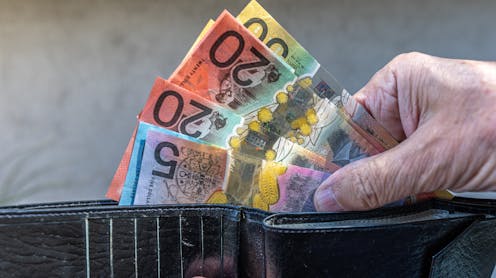What is Discretionary Spending?
Discretionary spending represents the "fun" part of your budget, encompassing the purchases that make life enjoyable but aren’t strictly necessary for your survival. If you’ve ever reviewed your bank statements, you’ve likely noticed two distinct types of spending: essential and non-essential. Essential spending includes rent, groceries, and utility bills—expenses you can’t avoid without severe personal or financial consequences. On the other hand, discretionary spending includes purchases like concert tickets, meals at restaurants, and gym memberships. These are the expenditures that bring joy and add value to your life but are flexible enough to adjust or cut back when needed.
Discretionary Spending vs. Discretionary Income
Discretionary income is the amount of post-tax income left after paying for essential expenses. It represents your financial flexibility—the money you have to spend on non-essentials and luxuries. Discretionary income is closely tied to discretionary spending because it directly funds those extra purchases that make life more enjoyable. If your income shrinks due to a job loss, pay cut, or other financial strain, your discretionary income is usually the first to take a hit. Essential expenses, like food, housing, and clothing, can only be minimized to a certain extent, but discretionary spending can expand and contract with your financial situation.
For example, if you receive a pay raise, your discretionary income might increase, allowing for more spending on luxuries like dining out or traveling. Conversely, if you experience a significant life change, such as having a child, your essential expenses might grow, reducing the portion of your income available for discretionary spending even without a direct decrease in income.
Examples of Discretionary Expenses
Discretionary expenses vary widely and include both tangible items and experiences that enhance your quality of life. Here are some common examples:
Dining Out: Meals at restaurants, takeout, and delivery services.
Entertainment: Concerts, movies, sporting events, and theater performances.
Grooming and Beauty: Haircuts, salon visits, and beauty products.
Household Goods: Furniture, decor, electronics, and kitchenware.
Travel: Plane tickets, hotel stays, meals, and excursions.
Gifts: Presents for birthdays, holidays, and special occasions.
Donations: Charitable contributions and recurring donations.
Subscriptions and Memberships: Streaming services, gym memberships, and meal kits.
These expenses are not strictly necessary for survival but can significantly contribute to personal satisfaction and well-being. Balancing these expenses with essential spending and savings is key to maintaining financial health.
How to Budget for Discretionary Spending
Discretionary spending isn’t necessary, but it funds the things and experiences that add value to your life. A well-balanced budget should account for both discretionary and non-discretionary spending, along with savings goals. Below are some popular budgeting methods that can help you manage discretionary spending:
1. 50/30/20 Budgeting
The 50/30/20 rule is a simple yet effective method that divides your net income into three main categories:
50% for Essential Spending: This portion covers necessities like rent, groceries, and utility bills.
30% for Discretionary Spending: This is the “fun” part of your budget—dining out, entertainment, and other non-essentials.
20% for Savings and Extra Debt Payments: Allocating this portion to savings helps secure your financial future.
While the 50/30/20 rule provides a balanced approach, it’s flexible enough to adjust according to your needs. For instance, if you have high childcare costs, you might need to allocate more than 50% of your income to essentials, which could require cutting back on discretionary spending or savings goals.
2. Zero-Based Budgeting
Zero-based budgeting is a hands-on approach that requires you to assign a purpose to every dollar you earn, ensuring that your total expenses (including savings) match your total income. To start, categorize your monthly expenses into discretionary, non-discretionary, and savings goals. Then, determine how much you want to spend in each category, making sure that the total equals your income.
Throughout the month, track your spending closely. If you overspend in one category, you’ll need to reallocate funds from another category to keep your budget balanced. This method is ideal for those who want to maintain tight control over their finances and are willing to adjust their spending as needed.
3. Pay-Yourself-First Budgeting
Pay-yourself-first budgeting focuses on prioritizing savings before all other expenses. You decide how much you want to save each month, directing that amount into retirement accounts, investments, or other savings goals. After saving, you use the remaining funds for essential and discretionary spending.
This method works well for those who already have a good grasp on their spending and aren’t struggling to cover their essential expenses. However, it can sometimes limit discretionary spending if savings targets are too aggressive, leading to a tight budget that leaves little room for non-essential purchases.
Balancing Discretionary Spending
Regardless of the budgeting method you choose, it’s crucial not to overlook discretionary spending. While it might seem frivolous, especially when money is tight, spending on things you love can keep you motivated and happy as you work toward your financial goals. Here are some tips to help you balance discretionary spending:
Set Priorities: Identify which discretionary expenses bring you the most joy and prioritize them. Whether it’s a monthly spa day or a subscription service, focus on what adds the most value to your life.
Create a Fun Fund: Set aside a specific amount of money each month solely for discretionary spending. This way, you can enjoy your favorite activities guilt-free, knowing it’s part of your budget.
Use Cash Envelopes: For those who struggle to keep discretionary spending in check, using cash envelopes can be a helpful tool. Allocate cash for specific discretionary categories, such as dining out or entertainment. Once the cash is gone, you know you’ve reached your limit for the month.
Avoid Impulse Buys: Discretionary spending can quickly spiral out of control if you’re not mindful of your purchases. Try implementing a “cooling-off period” before making any non-essential purchases. Wait 24 hours before buying something to determine if it’s something you truly want or need.
Adjust When Necessary: Life changes, and so should your budget. If you find that your discretionary spending is consistently higher than planned, adjust your budget categories. On the flip side, if you find yourself with extra money, consider allocating a portion toward discretionary spending for a special treat.
Set Discretionary Spending Limits: Establish clear spending limits for discretionary expenses each month. This not only helps you stay within your budget but also prevents overspending on non-essentials that can derail your financial goals.
Track Your Spending: Keep a close eye on your discretionary spending by tracking your purchases. Use budgeting apps or spreadsheets to monitor your spending patterns and make adjustments as needed. Understanding where your money goes can help you make informed decisions about future purchases.
The Importance of Discretionary Spending
While discretionary spending is often viewed as the first expense to cut when money is tight, it plays an essential role in your overall quality of life. These non-essential expenses are what make life enjoyable and help create a sense of balance. Whether it’s a spontaneous trip, a night out with friends, or a monthly subscription to your favorite magazine, discretionary spending allows you to invest in yourself and your happiness.
Finding the right balance between discretionary spending, essential expenses, and savings is key to maintaining financial health and well-being. By adopting a budgeting method that works for you, you can ensure that you’re meeting your financial goals while still enjoying the little luxuries that bring joy to your life.
 Photo Credit: iStock photo
Photo Credit: iStock photo
Discretionary spending represents the freedom to enjoy your hard-earned money in ways that make life fulfilling. It’s the portion of your budget that allows for flexibility and personal expression through experiences, goods, and services that aren’t strictly necessary but are deeply valued. By understanding and budgeting for discretionary spending, you can make the most of your discretionary income, finding joy in the small and large expenditures that define your lifestyle. Whether you opt for the structured approach of zero-based budgeting or the simplicity of pay-yourself-first, incorporating discretionary spending into your financial plan ensures that you live not just responsibly but also enjoyably.


















 English (United States) ·
English (United States) ·